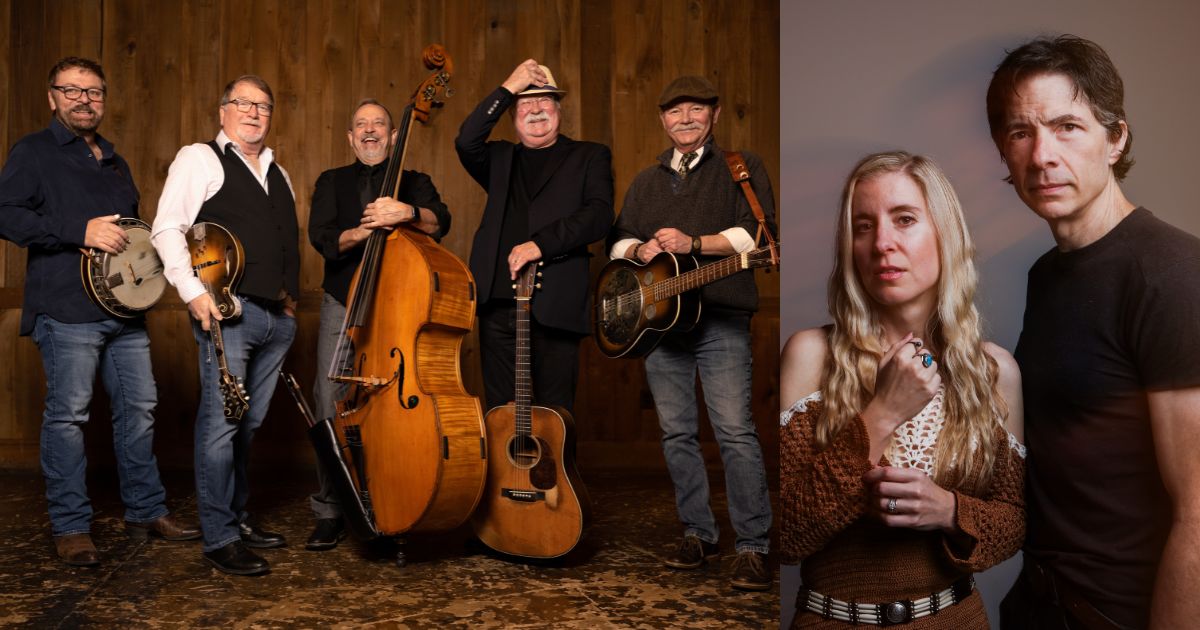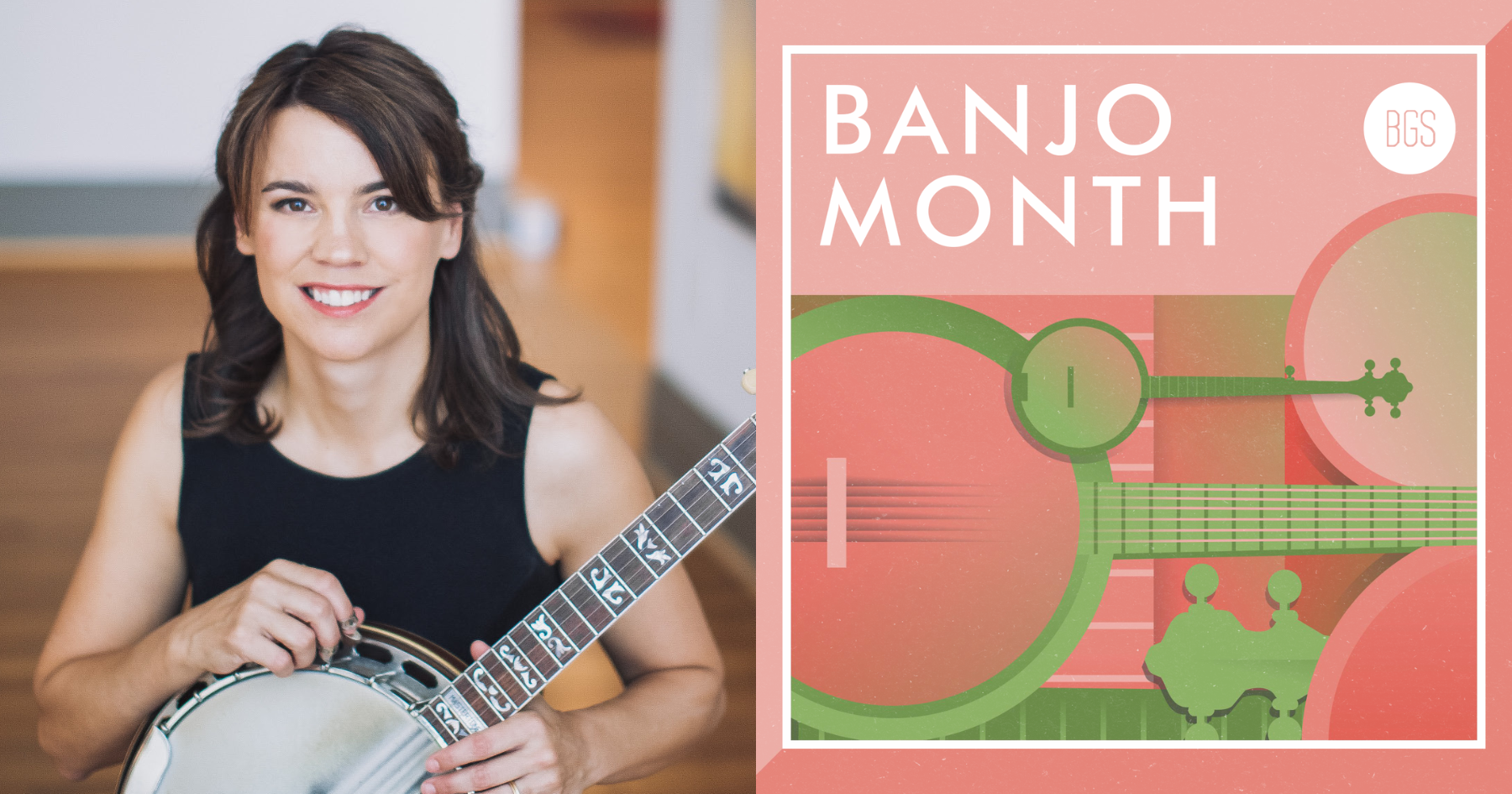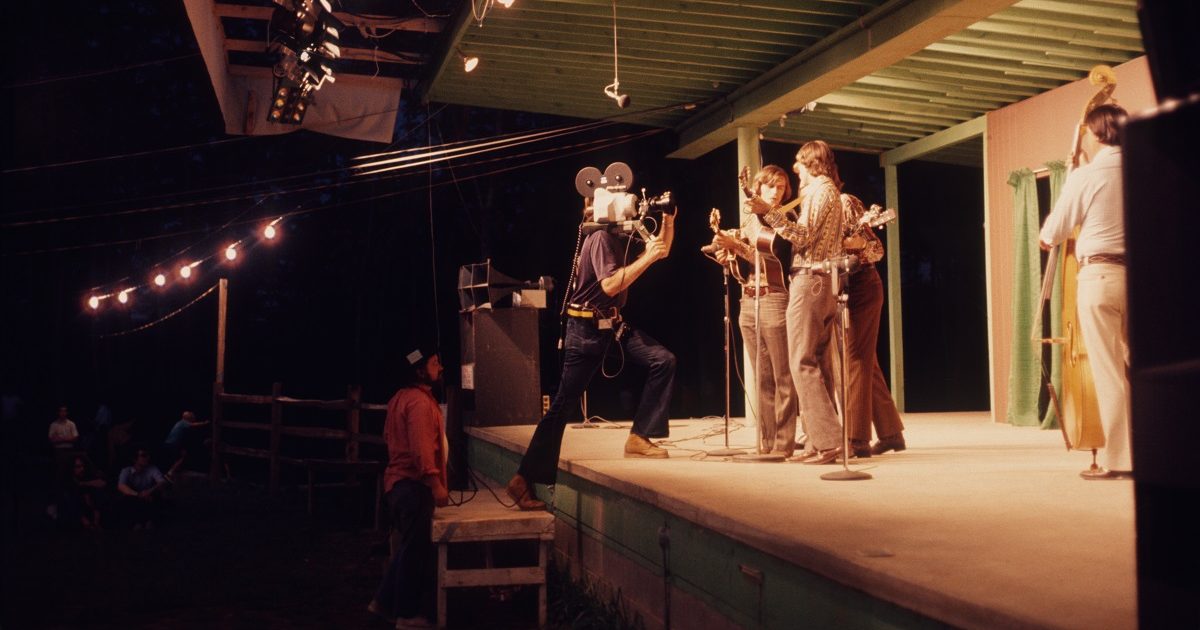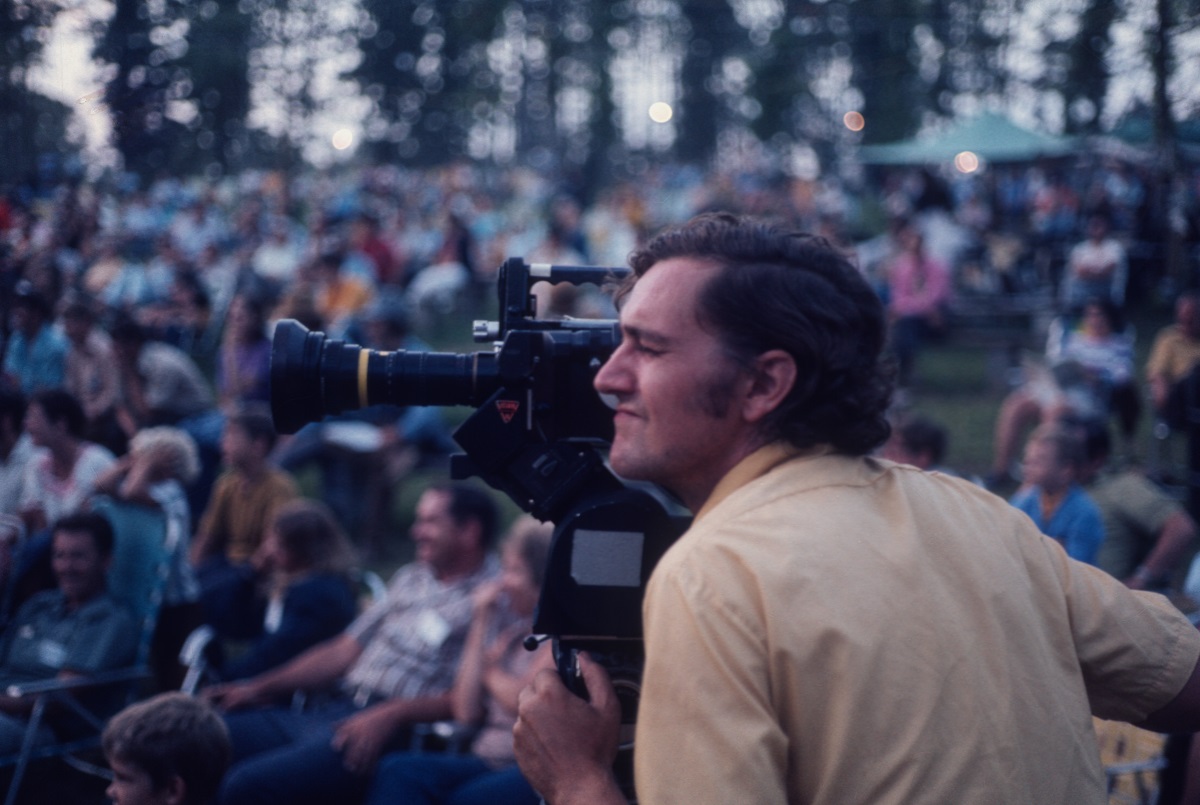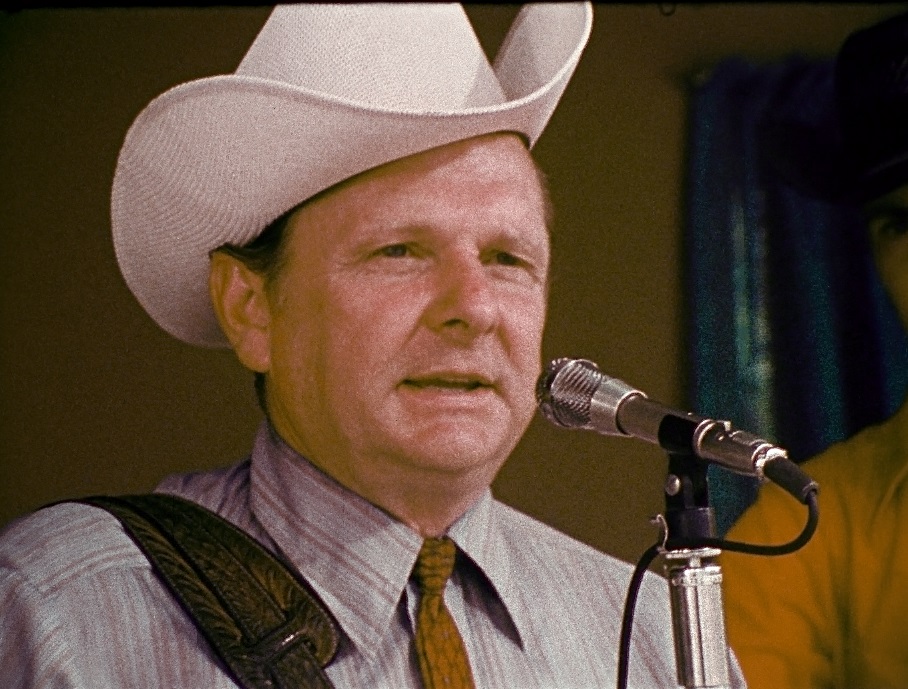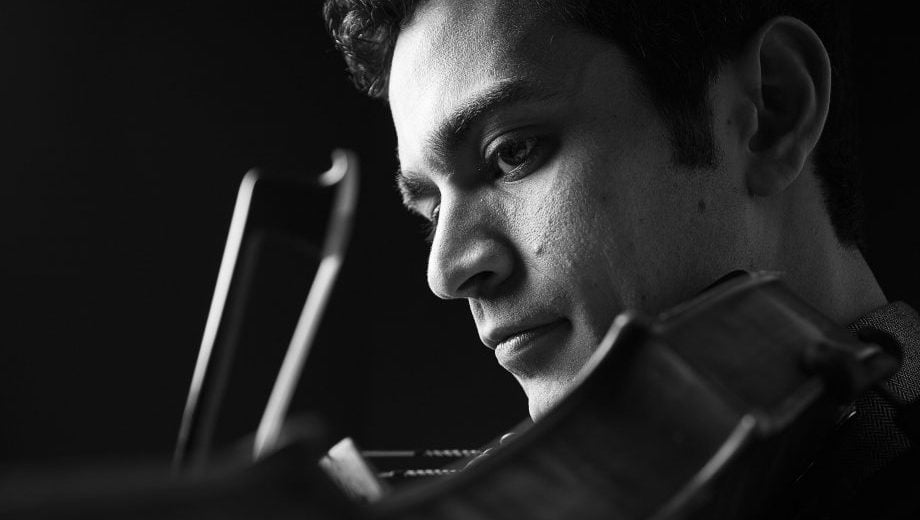You’ve reached the end of the week! For a little treat, how about a few brand new songs and music videos? You Gotta Hear This!
If you’re looking for bluegrass, we’ve certainly got it this week– Chris Jones & The Night Drivers share their first recording of a Tom T. Hall original, “Mama Bake a Pie (Daddy Kill a Chicken),” since their dear friend and Bluegrass Hall of Famer passed away a few years ago. Plus, bluegrass legends Seldom Scene preview their upcoming album, Remains to Be Scene, with a new single, “Last of the Steam-Powered Trains.” And, wrapping up our bluegrass trifecta, banjo player Max Wareham pays tribute to NHL team the Boston Bruins with an excellent shredding instrumental tune, “The Black & Gold.”
From elsewhere across the roots music landscape, duo Swearingen & Kelli offer “Break Me Down,” a powerful acoustic number with plenty of grit, slide guitar, and blues influence. Plus, don’t miss Justin Wells’ new music video for “Sad, Tomorrow,” a contemplative slow burn of a song that focuses on mental health, melancholy, and forging ahead.
It’s a lovely collection of new roots music to take you into the weekend, and you know what we think – You Gotta Hear This!
Chris Jones & the Night Drivers, “Mama Bake a Pie (Daddy Kill a Chicken)”
Artist: Chris Jones & The Night Drivers
Hometown: Nashville, Tennessee
Song: “Mama Bake a Pie (Daddy Kill a Chicken)”
Release Date: January 17, 2025
Label: Mountain Home Music Company
In Their Words: “This is an old and lesser-known Vietnam War-era song of Tom T. Hall’s and the first song of his I’ve recorded since his passing a few years ago. I think I didn’t feel ready to until now. He had a unique ability to incorporate bits of humor into a sad story, and this is definitely one of those. This song is vivid and poignant in a way that is vintage Tom T. I was going to record this several years ago, but when I brought it up to Tom T. and Dixie, they wrote ‘Hero in Harlan’ that very day to give me something new to do instead.” – Chris Jones
Seldom Scene, “Last of the Steam-Powered Trains”
Artist: The Seldom Scene
Hometown: Bethesda, Maryland
Song: “Last of the Steam-Powered Train”
Album: Remains to Be Scene
Release Date: January 14, 2025 (single); March 14, 2025 (album)
Label: Smithsonian Folkways
In Their Words: “This song was written by Ray Douglas Davies and recorded by the rock group The Kinks in the 1960s. The Scene has always looked outside the box for material, and we thought this one fit the bill.” – Lou Reid
Swearingen & Kelli, “Break Me Down”
Artist: Swearingen & Kelli
Hometown: Nashville, Tennessee
Song: “Break Me Down”
Release Date: January 24, 2025
Label: Gone Rogue Music
In Their Words: “I wrote this song a few years back, but it never really got its due. I was also really obsessed with slide guitar at that time. It’s a little gritty, and when Jayne added her vocals on top, I thought, ‘Ok, this is exactly what this song needs.’ I love the discovery process of writing and recording. Sometimes it takes a while to find the exact combination of sounds with an arrangement to tell the story the way you really want to.” – AJ Swearingen
Track Credits:
AJ Swearingen – Guitars, drums, percussion, bass, vocals
Jayne Kelli – Vocals, organ
Max Wareham, “The Black & Gold”
Artist: Max Wareham
Hometown: Boston, Massachusetts
Song: “The Black & Gold”
Album: DAGGOMIT!
Release Date: January 17, 2025 (single); February 21, 2025 (album)
In Their Words: “Sports and music might have more in common than we think – this tune is a tribute to the Boston Bruins’ legendary ’22-’23 season, during which they broke most NHL records. Musically, the A part was inspired by Bill Emerson and the B part is a nod to the style of banjo legend, Rudy Lyle.” – Max Wareham
Track Credits:
Max Wareham – Banjo
Laura Orshaw – Fiddle
Chris Henry – Mandolin
Chris Eldridge – Guitar
Mike Bub – Bass
Larry Atamanuik – Snare
Justin Wells, “Sad, Tomorrow”
Artist: Justin Wells
Hometown: Lexington, Kentucky
Song: “Sad, Tomorrow”
Album: Cynthiana
Release Date: January 15, 2025 (single); February 20, 2025 (album)
In Their Words: “The title of the song comes from a story Nicole Kidman told Marc Maron on Maron’s podcast, WTF. Kidman talked about how she often took her characters home with her, acting in front of a mirror. Her young child had grown accustomed to seeing and hearing her mother work on these roles. A day or so after Kidman’s father died, she was grieving at home, and her kid heard this. Her kid asked ‘Mom, why are you crying?’
“‘Well, I’m crying because I’m sad, because Papaw died.’
“Her child, accustomed to seeing her Mom go in and out of emotions while working on her acting, replied, ‘Well, are you gonna be sad tomorrow?’
“I wanted to write this song about that feeling of helplessness you have when a friend is struggling with depression, when the only thing you can do sometimes is just be there. I ended up asking my dear friend Adam Lee to help me finish it, which was considerably apropos, because we’d both been each other’s therapist through lockdown, when we were kinda losing our minds. Considering all of the above, the song carries an even bigger weight because it’s one of the last songs that my friend Robby Cosenza played on before he passed. Robby was a Lexington icon, playing on hundreds of albums including a Ringo Starr record as well as my debut album, Dawn in the Distance, and he was instrumental in helping me get my legs under me when I started my solo career.” – Justin Wells
Photo Credit: Seldom Scene by Jeromie Stephens; Swearingen & Kelli by Daniel Shippy.
